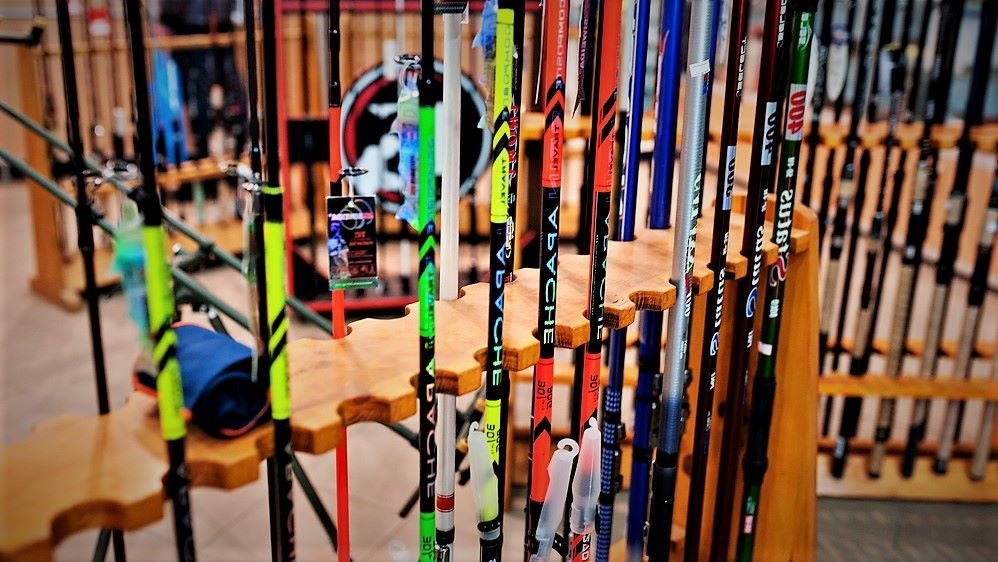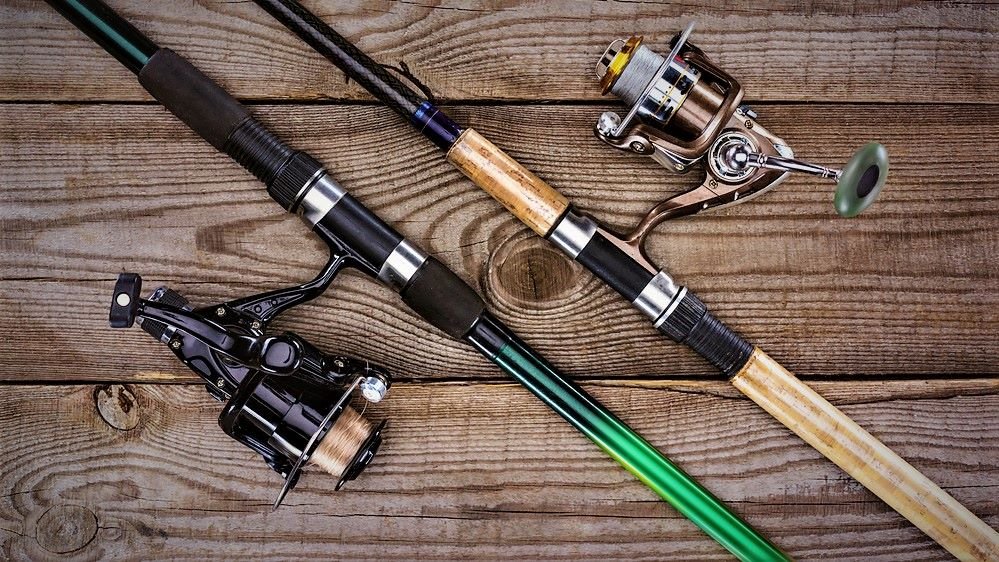Best Surf Fishing Rod And Reel Combo 2023
Fishing is an activity that has been around for centuries, but the perfect rod and reel combo for surf fishing eludes us like a fish in the sea. It’s easy to get overwhelmed by all the options – from lightweight spincast reels to heavy-duty spinning rods. Yet, finding the right combo of tackle can make or break your experience on the water.
This article will help you understand which combination of rod and reel works best when surf fishing so you don’t have to feel lost at sea. Whether you’re new to this angling or want an upgrade from what you already own, we’ll dive into what makes each tool unique and how it can meet your needs. We’ll also discuss why having the right equipment is essential for success and provide some tips on where to buy quality products without breaking the bank.
The journey towards mastering any skill takes time; however, with our guide, you won’t be left feeling adrift while searching for your ideal rod and reel combo for surf fishing. You’ll quickly find yourself equipped with confidence and knowledge as you better understand what lies beneath the surface – literally and figuratively!
How To Choose The Best Surf Fishing Combo

Are you looking to join the growing number of surf fishing fanatics in America? If so, you must find the best rod and reel combo for your needs!
When selecting a surf spinning rod and reel combination, there are several factors to consider. Firstly, consider where you will be using it: beach or pier fishing requires heavier gear than boat-based angling.
It is also worth considering what type of fish you wish to catch, as some combos may not be suitable for certain species.
If your budget allows, try to find an all-inclusive kit with additional items such as line and lures included, as it can save both time and money when starting on your new hobby (and you can always sell it on the second-hand market and upgrade to something fancier later)
Once you find the perfect setup, it’s time to select the necessary components. Most experts agree that a 9ft long medium power rod matched up with a 3000 series reel works well in most conditions and balances casting distance and sensitivity when reeling in your catch. Regarding rod material, graphite rods offer lightweight maneuverability, but glass fiber models provide excellent durability against knocks or drops from accidental slips off piers or boat sides.
Finally, do not forget other essential equipment such as bait bags, pliers, and de-hookers – these tools can make all the difference during a successful day out on the water. With careful consideration of these points and some research around prices and availability on reputable sites like Amazon, finding the best surf fishing combo for your needs does not need to be complicated or expensive. So why wait any longer – get ready for an exciting adventure today!
Top 10 Best Surf Fishing Rod and Reel Combos

Here are the top ten picks for the best surf fishing rods & reels combos around:
- PENN Slammer III Spinning Fishing Reel + Seeker Hercules Surf Spinning Rod
- Daiwa Saltiga Saltwater Spinning Reels + PENN Fishing Battalion II Surf Spinning Rod
- Okuma Tundra Surf Spinning Combo
- Daiwa Bg Spinning Reel + Shakespeare Ugly Stik Bigwater Spinning Rod
- PENN Battle Spinning Fishing Reel + St. Croix Rods Mojo Musky Casting Rod
- Penn Clash II Spinning Reel + Fiblink Surf Spinning Fishing Rod 2-Piece Graphite
- Alwonder Saltwater Spinning Reel + Daiwa Beefstick Surf Rod
- Daiwa Saltist Spinning Reel + Tica UGSA Series Surf Spinning Fishing Rod
- PENN Battle Spinning Reel and Fishing Rod Combo
- Eagle Claw Medium Heavy Surfbeast Spin Combo
These options are perfect for beginners who want to cast long distances, have corrosion-resistant reel seats, superior balance, and increased power — a perfect surf fishing choice with exceptional performance at unbeatable price points. They are great value-for-money options, some with ultra-lightweight spinning reels to heavy-duty baitcasters – no matter which type of setup suits your style better.
What Size Rod And Reel For Surf Fishing
How do you choose? Let’s explore what size rod and reel for surf fishing works best!
Size matters. A 12-foot or 10-foot rod is ideal when looking for long-distance casting capabilities. Spinning reels are better for your needs if you want to target striper or shark species because their smaller profile allows them to cast with greater accuracy.
Invest in quality equipment rather than skimp out on cheap options – especially when it comes to fishing reels. Consider going for something like Shimano, which offers high-performance values at an affordable price range. Not only will this give you value for money, but its durability ensures it’ll last many trips down the beach without sacrificing functionality!
Choosing the right combination isn’t always easy, but being mindful of factors such as length of rods, type of reel, and cost-effectiveness will ensure excellent results and satisfaction from using top-notch gear every time. With a good understanding of these components, finding the perfect rod and reel combo won’t be a challenge anymore!
Types Of Surf Fishing Rods And Reels
As the saying goes, you only get out of something you put into it. The same holds true when deciding on a rod and reel combo for surf fishing. With countless options available to anglers, finding the correct type of setup can be overwhelming. To ensure success in your search for that perfect surf fishing combo, here are three essential factors to consider:
- Decide if you need a spinning or conventional reel to match your rod choice. A spinning rod is excellent for lighter baits and lures, while conventional reels can handle heavier lines and larger catches. Both types come in saltwater-rated models, so select one based on weight capacity, drag system, and overall durability.
- Determine how long of a rod best fits your needs. Most rods range from 10-12 feet, making them ideal for casting farther distances and reaching deeper waters without compromising accuracy or power. When selecting a specific model, look at its action rating, which will tell you how well it casts and whether it is designed more toward lightness or strength.
- Find the right combination of features that meet your preferences and budget constraints by looking at components such as guides, handles, line weights, etc., all of which vary depending on manufacturer and price point. Whether you’re seeking an affordable option or looking to splurge on a high-end surf spinning rod and reel combo, pay attention to these details to have an enjoyable experience every time you hit the beach!
Setting Up Surf Fishing Rod And Reel
Setting up a surf fishing rod and reel might seem intimidating, but with the right supplies and guidance, it can be an enjoyable experience. So let’s go through the steps of getting ready for that big catch!
- Pick out the perfect rod combo. We’ve covered that already above.
- Assemble your rod and reel setup, and ensure that you have fastened all the pieces together.
- Attach your fishing line according to its manufacturer’s instructions.
- Double-check each knot, as even a tiny mistake could mean losing valuable time when casting off from shore!
- Select a rod that matches your style of fishing.
- If you plan on using lures or bait, choose something lightweight yet sturdy to handle any possible catches you make.
- If you want maximum control over their casts, opt for heavier rods explicitly designed for deeper waters – they’ll provide more power behind each cast while also giving better accuracy when targeting desired areas.
Surf Fishing Rod And Reel For Specific Species
It pays to know which rod and reel combo will give you the best chance at catching specific species such as sharks, perch, or pompano.
Kastking Centron spinning reels are an excellent option for those seeking a reliable surf fishing rod and reel combo that can easily handle large fish. They feature corrosion-resistant stainless steel bearings and gear systems that allow smooth reeling even when casting long distances into rough waters. The spool shape also helps minimize line twists while allowing tight control over bait presentation – essential when targeting specific types of prey.
The right size rod is also necessary, depending on the targeted species. For example, a medium-heavy action 7’6″ rod would provide plenty of power for tackling larger gamefish like sharks or tarpon but could feel too heavy for smaller species such as perch or mackerel.
On the other hand, a light-medium 6’6″ model may not have enough backbone for bigger fish but should work well for bass and panfish without putting too much strain on anglers’ arms during long days spent wading in shallow water.
Fortunately, there are many different options available from various manufacturers that cater to all levels of experience and preferences – whether it’s a budget setup or a top-of-the-line one.
Best Surf Fishing Rod Characteristics
When it comes to surf fishing, having the right rod and reel is essential, and many fishermen swear that their success depends on their gear and knowing how to use it to catch the fish they are after. So let’s look at what characterizes the best surf fishing rods: casting distance, power, and the proper type of line.
Casting distance is one of the essential factors in choosing a good surf fishing rod, and it allows you to get your bait further out into deeper waters where larger fish are likely to be found. An ideal rod should have enough backbone to cast lures from 50-100 yards away easily. The power behind each cast will depend on how much weight you’re working with; heavier rods generally provide more strength than lighter ones.
The second factor is its power rating, as it helps to determine which specific types of fish you can catch with your rod – lower-powered models are great for inshore gamefish such as perch and pompano. In contrast, higher-powered models work better for offshore species like sharks or tuna. But overloading your reel with too much line increases the risk of twists and tangles, so balance is critical.
What type of line to use? Monofilament lines offer more flexibility than braided lines but may require frequent retying due to their weaker knot strength.
Fluorocarbon lines are also standard since they sink faster and remain nearly invisible underwater, making them perfect for stealthy presentations.
It all boils down to personal preference – experiment with different lines until you find something that works best for you!
No matter which type of fish you’re trying to catch, having reliable equipment plays a massive role in determining whether or not you’ll come home with dinner that day. Make sure your setup has adequate casting distance and power rating along with a high-quality line so that no matter what Mother Nature throws at your line, you’ll still be able to stand tall, knowing that you have everything necessary for a challenging fight and hopefully reel in the giant beasts from the abyss.
Frequently Asked Questions
What Is The Difference Between A Conventional Reel And A Spinning Reel?
Conventional reels are typically used with baitcasting or trolling rods as they allow anglers to cast heavier lures further out into deeper waters than spinning reels.
If you’re new to surf fishing, opting for a spinning reel might be easier since it requires less technique and knowledge about line management techniques such as backlashing or spooling correctly.
On top of this, many beginner fishermen find comfort in their more compact size when dealing with larger fish species like muskies or salmon.
What Is A Good Brand Of Surf Fishing Rod And Reel For A Beginner?
I’ve tried out several different brands of rods and reels that work great for beginners in surf fishing. Here’s what I recommend:
Penn Battle II Spinning Reel is lightweight and durable for frequent use.
Okuma Tundra Surf Rod Combo is perfect for surf fishing beginners, has extra strength construction without the added weight, and is pre-spooled with line.
Shimano Sustain FI Spinning Reel has excellent performance and keeps your gear safe from saltwater corrosion.
Ugly Stik Bigwater Travel Kit combines portability and durability and includes a spinning reel with a braid line and a 7-feet long medium action rod for ocean angling.
These combos will give you the power to cast far into the waves and have plenty of control when fighting a fish on the other end.
How Do I Know Which Type Of Surf Fishing Rod And Reel To Buy For The Type Of Fish I Want To Catch?
Here’s how you can ensure you get the proper setup: Firstly, consider what kind of fish you’ll be targeting – different rods are designed for specific types of fish.
Entry-level options cost between $50-$100.
If you want to go after larger gamefish like salmon or tuna, look into longer surf-casting rods such as 9ft-12ft medium-heavy spinning combos.
Secondly, consider your budget, and don’t forget that quality matters.
I recommend brands such as Shimano and Penn since they have good durability and performance ratings across their product lines.
So why not visit your local bait shop to see what setup would work best for you?
What Size Rod And Reel Should I Use For Long Distance Casting?
Check that your combo is suited for long-distance casting. If you want to cast a line over longer distances, then an 11-13 foot surfcasting rod with either a spinning or baitcaster reel is ideal. Spinning reels are generally easier to use than baitcasters, so they might be a better option if this is your first time attempting this fishing technique. Just remember that whichever type of reel you choose, mastering its operation will take practice and patience before your skills reach their full potential!
What Type Of Fishing Line Should I Use For Surf Fishing?
Some people obsess over lures but don’t give enough thought to the line. Choosing the proper line can make a significant difference when fishing.
Monofilament lines are ideal when targeting smaller species as they provide more stretch and offer better shock absorption if there’s a sudden tug on the line.
Braided lines have less stretch making them suitable for heavier lures or larger fish that require greater force to set the hook.
Fluorocarbon lines have the advantage of underwater invisibility, making them ideal for spooky fish or clear water conditions where visual cues may alarm potential catches.
Knowing what type of environment you’ll be fishing in helps determine how strong a line you should use so you won’t run into breakage problems during retrieval.
Understanding how far from shore and how deep you plan on casting helps decide whether monofilament, braid, or fluorocarbon is best suited for your trip.
Taking time to learn different knots, such as improved clinch knot, uni-knot, and Palomar knot will ensure secure attachment between your reel and bait/lure.
When selecting a line, always consider factors such as strength, flexibility, abrasion resistance & weight depending upon weather conditions & target species size.
Conclusion
Remember to check any local regulations or restrictions regarding fishing gear or license usage before heading out onto open water – breaking these rules could land you in trouble!
Surf fishing can be a fun and rewarding activity. You need to consider what type of fish you want to catch, how far you will cast your line, and which style of reel fits your needs best – conventional or spinning. Keep these tips in mind; before you know it, you’ll swim in fish. So go ahead – take the plunge into surf fishing. With some patience and dedication, who knows?

